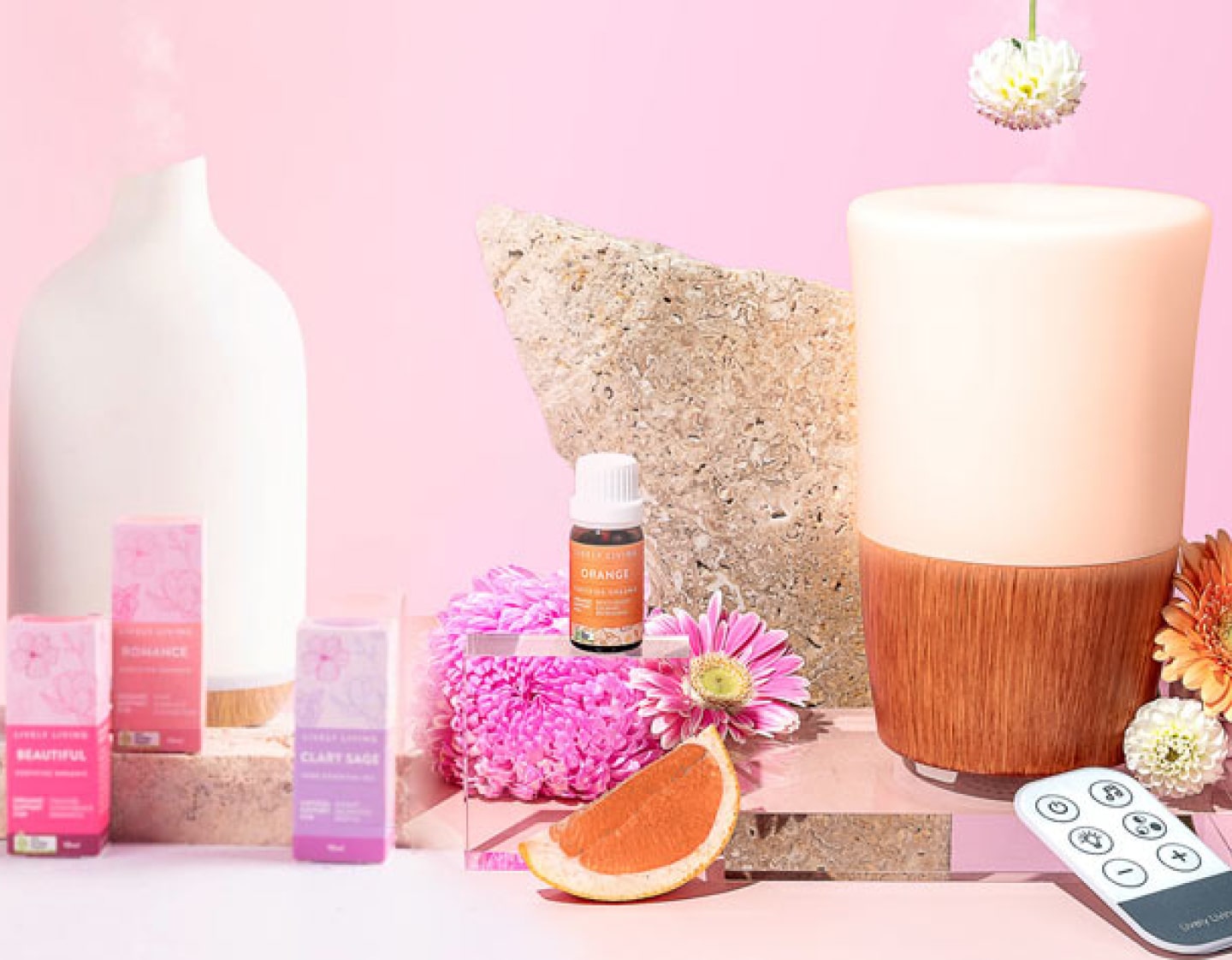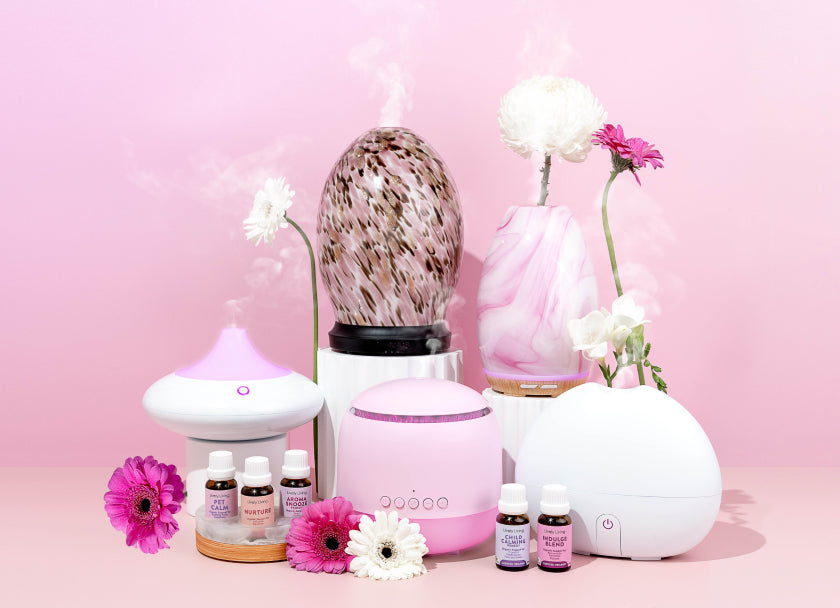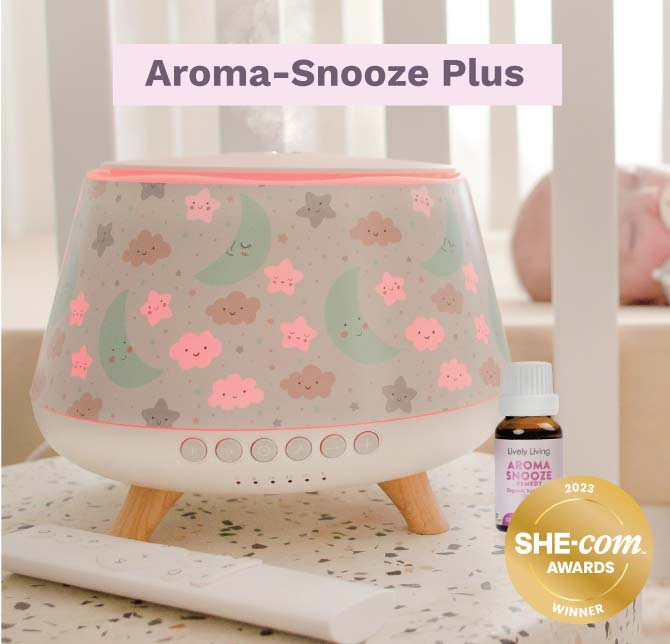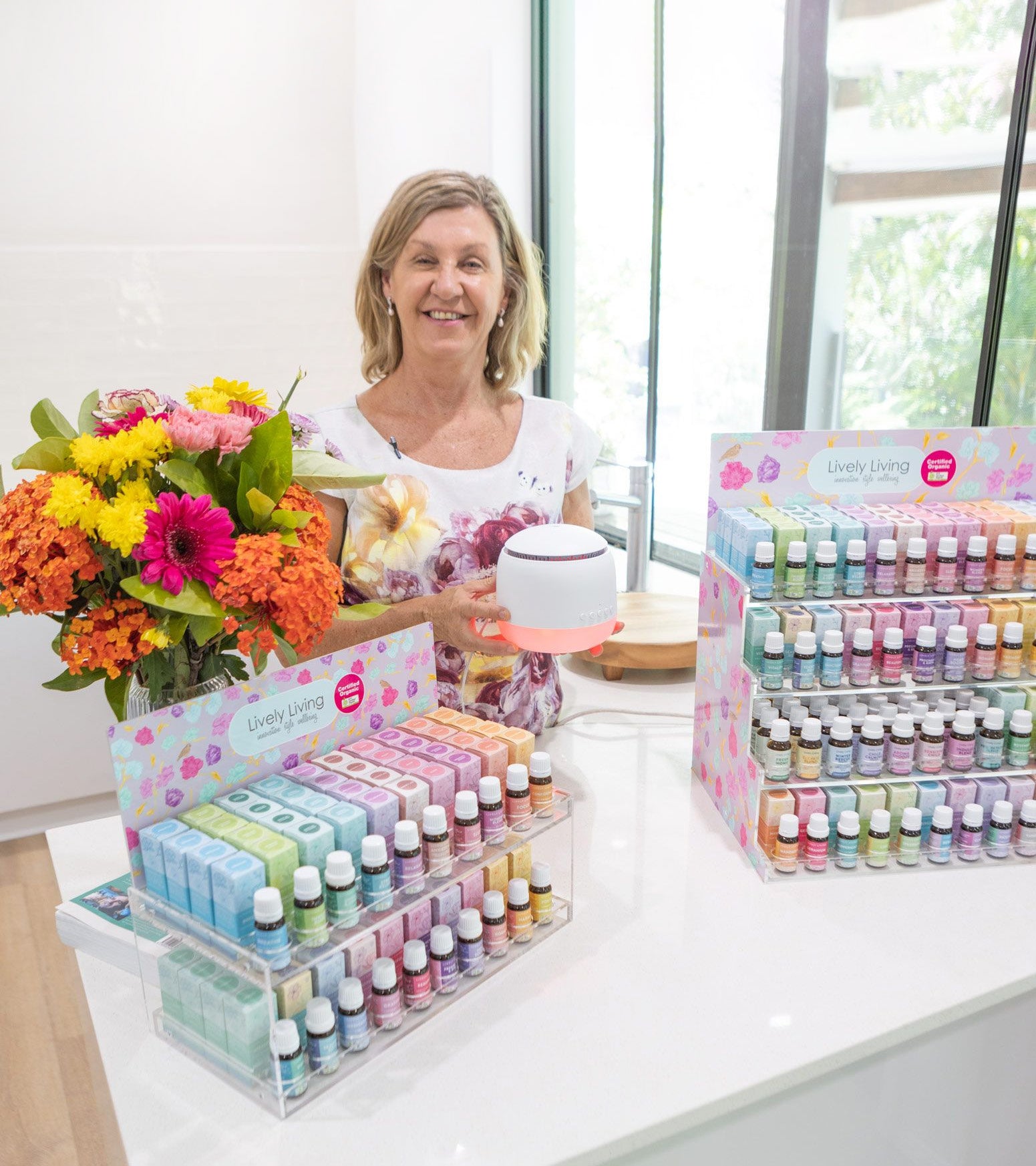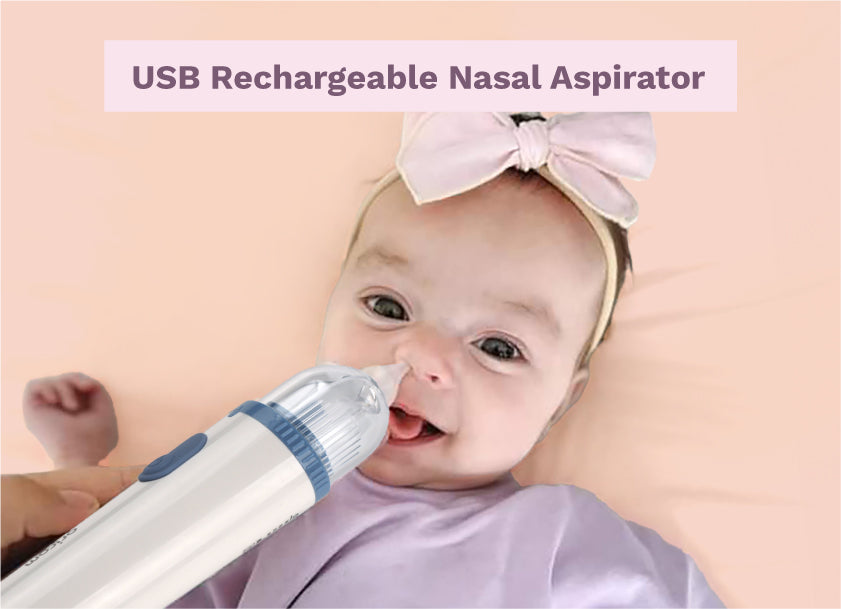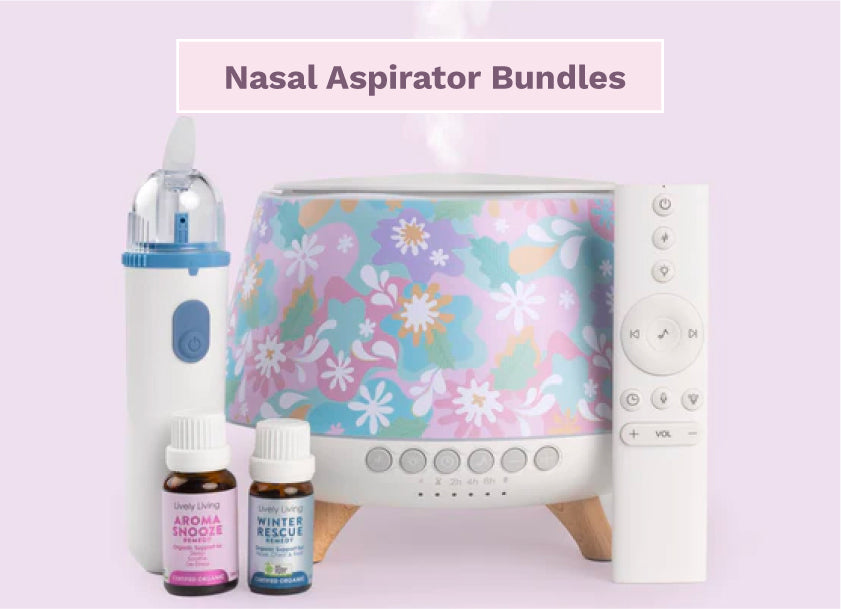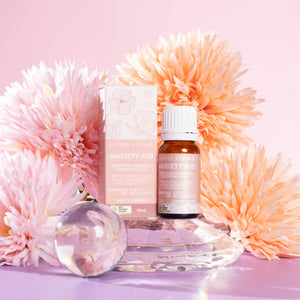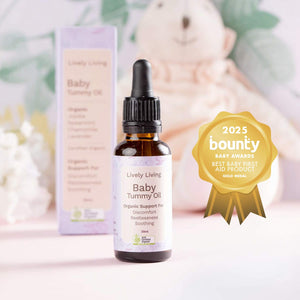A Comprehensive Guide to Essential Oil Safety Tips
Essential oils smell amazing, don't they? Many people love using them for their delightful scents and other potential benefits. You might be curious about how to use them safely and effectively.
This guide is here to help. You will learn important tips. This comprehensive guide to essential oil safety will walk you through what you need to know. It's important to enjoy essential oils without any oops moments; following this comprehensive guide to essential oil safety can make a big difference in your experience.
Table Of Contents:
- What Are Essential Oils Anyway?
- Why Essential Oil Safety Matters So Much
- A Comprehensive Guide to Essential Oil Safety - Core Principles
- Understanding the Risks: Oil Constituent Dangers and Biological Actions
- Essential Oil/Drug Interactions
- Special Considerations: Kids, Pets, Pregnancy, and the Elderly
- Common Essential Oil Mistakes (And How to Avoid Them)
- What to Do If You Have an Adverse Reaction
- Storing Your Essential Oils Properly for Longevity and Safety
- Finding Quality Essential Oils
- Conclusion
What Are Essential Oils Anyway?
Essential oils are potent plant extracts, capturing the very essence of a plant's fragrance and therapeutic properties. They are obtained by steaming or pressing various plant parts. This could include flowers, bark, leaves, fruit, or even the precious raw materials like resins.
The process to create a pure essential oil captures the volatile organic compounds that produce a plant's characteristic scent and biological actions. It often requires a substantial amount of plant material to produce even a small bottle of essential oil. This high concentration is why they are so powerful and why essential oil safety is paramount.
Consider tea tree oil, for example, which comes from the leaves of the Melaleuca alternifolia plant, or lavender oil from lavender flowers. These pure essential oils contain natural chemicals giving plants their specific properties. People have used them for centuries in various cultures, but their strength demands careful handling and a solid oil safety guide.

Why Essential Oil Safety Matters So Much
Because essential oils are so concentrated, they can cause problems if used improperly. You might think something natural is always safe, but this is not always true with potent substances like essential oils. Incorrect use can lead to skin irritation, an adverse reaction, or sensitization; some oils can even cause more serious issues if not handled with respect, which is why an essential oil safety guide is so important.
Your skin is a large organ that can absorb what you put on it. If undiluted essential oils are applied, they might irritate the skin, especially sensitive skin. Some oils can also make your skin more sensitive to sunlight, a condition known as phototoxicity. Understanding how to use them correctly helps you get the benefits while avoiding unwanted effects and is a cornerstone of general safety.
Safety information protects you, your family, and even your pets, so pet care considerations are vital. Everyone's body chemistry is different, and what works for one person might not suit another. Learning about safety helps you make good choices, so you can feel confident when using your essential oils, and health care professionals often stress the importance of this knowledge.
A Comprehensive Guide to Essential Oil Safety - Core Principles
Using essential oils safely does not have to be complicated. It mainly comes down to a few key ideas, many of which are detailed in essential oil safety guidelines. If you keep these principles in mind, you'll be well on your way to enjoying aromatherapy responsibly.
Dilution is Your Best Friend
Most essential oils should not be applied directly to your skin without dilution. Using them neat, or undiluted, can often lead to irritation, sensitization, or other adverse reactions. The best practice is to dilute them in a carrier oil before topical application; these carrier oils are often vegetable oils.
Suitable carrier oils include coconut oil, jojoba oil, almond oil, or olive oil. What's a good dilution rate? For most adults and general use, a 1-2% dilution is a safe starting point, translating to 1-2 drops of essential oil per teaspoon (5ml) of carrier oil. For massage oils or widespread body application, aim for 1%; for smaller, localized areas, you might go up to 2% or slightly more for acute situations, but always with caution and awareness of oil safety principles.
Here's a simple dilution chart, and for more detailed figures, you can consult conversion tables from reputable sources:
| Percentage | Essential Oil Drops per 1 tsp (5ml) Carrier Oil | Essential Oil Drops per 1 Tbsp (15ml) Carrier Oil |
| 1% | 1 drop | 3 drops |
| 2% | 2 drops | 6 drops |
| 3% | 3 drops | 9 drops |
Always start with a lower dilution, especially if you have sensitive skin. You can increase it if needed and if it's appropriate for that specific oil. Experts like Robert Tisserand and Rodney Young have published extensive works on essential oil safety, offering detailed dilution guidelines.

Know Your Oils – Not All Are Created Equal
Different essential oils have different chemical makeups, detailed in their essential oil profiles and constituent profiles. This means they have varying safety profiles and biological actions. Some oils, like lavender and chamomile, are generally gentler on the skin. Others, such as cinnamon bark, clove, or oregano, are considered 'hot' oils and can easily cause skin irritation if not heavily diluted; understanding each detailed essential oil constituent is important here.
Some oils are phototoxic, meaning they can cause your skin to react badly to sunlight or UV rays after application. Bergamot, lime (expressed), lemon (expressed), and grapefruit are common examples of phototoxic essential oils. If you apply these to your skin, avoid sun exposure or tanning beds on that area for at least 12-18 hours. Reading up on each specific oil profile you plan to use is very important, using information from trusted aromatherapy sources or a comprehensive text on the subject.
Patch Testing: A Simple Step for Safety
Before using a new essential oil or essential oil blends more widely, always perform a patch test. This is particularly important if you have a history of sensitive skin or allergies. Mix one drop of the essential oil with about half a teaspoon to one full teaspoon of carrier oil.
Apply a small amount of this diluted oil to an inconspicuous area of skin, such as the inside of your forearm. Cover it with a bandage and wait for 24 to 48 hours. If you observe any redness, itching, burning, or other irritation, do not use that oil topically. Even if an oil is generally considered safe, your individual body chemistry might react differently, so this step is crucial for personal care involving pure essential oils.
Mind Your Methods: Inhalation, Topical, Internal
There are several ways to use essential oils, and each method has its own safety considerations. It's vital to choose the method appropriate for the oil and the desired outcome. Understanding these distinctions forms a rational basis for safe usage.
- Inhalation: This is generally a very safe method for enjoying essential oils. You can diffuse oils into the air using various types of diffusers (ultrasonic, nebulizing, etc.). You can also put a few drops on a cotton ball or tissue and sniff. Even with inhalation, ensure good ventilation in the room and diffuse intermittently rather than constantly to avoid overwhelming the senses or causing headaches.
- Topical Application: This involves applying diluted essential oils to the skin. Always dilute appropriately in a carrier oil, as discussed. Pay attention to the specific oil's properties and any warnings (like phototoxicity). Avoid applying to broken skin or sensitive areas like the eyes and mucous membranes.
- Internal Use: This is a highly controversial topic within the aromatherapy community. Most certified aromatherapists and health care professionals advise against ingesting essential oils without specific guidance from a qualified care professional trained in their internal use. Oils are highly concentrated and can damage mucous membranes or internal organs if used incorrectly, and potential oil/drug interactions are a serious concern. Casual internal use of essential oils like a drop of lemon in a bottle of water, or a few drops used in cooking is hwoever considered acceptable for most.

General Safety Guidelines
Beyond the core principles, some general safety guidelines apply to all essential oil use. Keep essential oils away from flames as many are flammable. Do not add undiluted essential oils directly to bathwater; they will not mix and can irritate the skin. Instead, mix them with a carrier oil or an emulsifier like full-fat milk or Epsom salts before adding to the bath.
If you have a pre-existing medical condition or are taking medications, consult with your doctor or a qualified aromatherapist. This is important because of potential oil/drug interactions. These general safety rules help you enjoy the benefits of essential oils while minimizing risks.
Understanding the Risks: Oil Constituent Dangers and Biological Actions
The safety of an essential oil is intrinsically linked to its chemical composition, specifically its individual oil constituent components. Each essential oil constituent has its own set of biological actions and potential risks. For instance, some constituents might be skin irritants, while others could be allergens or even have systemic effects if used improperly.
Reputable sources on essential oil safety often provide detailed essential oil constituent profiles. This information allows users and health care professionals to assess risks based on scientific data rather than anecdotal evidence. Understanding these profiles forms a rational basis for making informed decisions about which oils to use and how to use them safely, particularly when considering factors like age, health status, and potential sensitivities.
Some constituents, like phenols found in oregano or thyme oil, have strong antimicrobial properties but can also be highly irritating to the skin and mucous membranes if not properly diluted. Others, like certain aldehydes found in cinnamon bark oil, also require extreme caution. Awareness of the detailed essential oil constituent profile for any oil you use is a key aspect of oil safety.
Essential Oil/Drug Interactions
A critical aspect of essential oil safety involves understanding potential essential oil/drug interactions. Certain essential oils can interact with prescription or over-the-counter medications because their constituents can affect how drug substrates are metabolized in the body. This is a key area of clinical safety research in aromatherapy.
For example, some essential oils rich in constituents like methyl salicylate (found in wintergreen and birch) can potentiate the effects of anticoagulant drugs, increasing the risk of bleeding. Other oils might interfere with liver enzymes responsible for drug metabolism, either speeding up or slowing down how a drug works. The work of experts like Robert Tisserand and Rodney Young in their comprehensive text, 'Essential Oil Safety: A Guide for Health Care Professionals,' provides extensive information on known and potential oil/drug interactions detailed essential oil constituent by constituent.
If you are taking any medication, especially for chronic conditions, it is crucial to consult your doctor or a pharmacist knowledgeable about essential oil/drug interactions before using essential oils. This dialogue helps to prevent adverse reactions and ensures your treatment plan remains effective. Documenting any interactions detailed essential oil constituent information you find can be helpful for these discussions.
Special Considerations: Kids, Pets, Pregnancy, and the Elderly
Safety guidelines for essential oils need to be adjusted when considering vulnerable populations. Their bodies may process essential oils differently, making them more susceptible to adverse effects. These are crucial safety guidelines to follow.
- Children: Children are more sensitive than adults. Their skin is thinner, their metabolisms are different, and their bodies are smaller. Use extreme caution and much higher dilutions (e.g., 0.25-0.5% for toddlers, slightly higher for older children). Some oils should be avoided altogether for young children, such as peppermint (due to menthol content which can slow breathing in infants) and eucalyptus (similar concerns). Always research specific oils from a trusted oil safety guide before using them around or on children, and keep oils out of their reach.
- Pets: Animals, especially cats, metabolize essential oils differently than humans. Many essential oils are toxic to pets, even when diffused. Tea tree oil is very dangerous for both dogs and cats. Citrus oils, peppermint, wintergreen, pine, and ylang-ylang can also be problematic for pet care. Consult a veterinarian familiar with essential oils before using them around your pets; the ASPCA and other animal welfare organizations offer valuable advice.
- Pregnancy and Breastfeeding: Some essential oils should be avoided during pregnancy and while breastfeeding. This is because certain essential oil constituent compounds could potentially cross the placenta or pass into breast milk, posing risks to the developing baby. Examples include clary sage (may stimulate contractions, best avoided until full term under guidance), wintergreen, sage, myrrh, and fennel. Always check with your healthcare provider or a certified aromatherapist specializing in pregnancy before using any essential oils.
- The Elderly: Older adults may also have increased sensitivity to essential oils due to thinner skin, slower metabolism, and potential interactions with medications for chronic conditions. Lower dilutions are generally recommended. It's important to consider their overall health status and any medications they are taking, making consultation with health care professionals advisable.
Common Essential Oil Mistakes (And How to Avoid Them)
It is easy to make mistakes when you are new to essential oils. Knowing common pitfalls can help you steer clear and maintain good oil safety practices. Avoiding these errors contributes to a positive experience.
- Using Undiluted Oils on Skin: This is a significant and common error. Always dilute pure essential oils in a carrier oil before topical application to prevent skin irritation or sensitization. Your future skin will thank you for this.
- Ingesting Oils Casually: Just because something is natural does not mean it is safe to swallow. Most experts and care professionals advise against this without expert medical guidance due to the high concentration and potential for internal damage or severe adverse reaction.
- Overusing Oils in a Diffuser: More is not always better with diffusion. Diffusing too much oil, using certain strong oils in small unventilated spaces, or diffusing for excessively long periods can cause headaches, nausea, or respiratory irritation. Stick to a few drops and diffuse for short, intermittent periods (e.g., 30-60 minutes on, 30-60 minutes off).
- Not Considering Individual Sensitivities: Everyone is different. What one person tolerates well, another might react to, even with oils generally considered safe. Start low and go slow, and always perform a patch test with new oils.
- Ignoring Phototoxicity Warnings: Using phototoxic oils (like bergamot or expressed lime) and then exposing the skin to sun or UV tanning beds can lead to nasty burns, blisters, or skin discoloration. Always check the oil profiles for any such warnings.
- Assuming All Oils Are Safe for Everyone: As discussed, children, pregnant or breastfeeding individuals, the elderly, and pets have specific needs and sensitivities. Research specific safety guidelines before using essential oils with these groups.
- Using Old or Poorly Stored Oils: Essential oils can degrade and oxidize over time, especially if not stored correctly. Degraded oils are more likely to cause skin irritation or sensitization. Pay attention to shelf life and store them properly.
- Believing 'Therapeutic Grade' is a Regulated Standard: Terms like 'therapeutic grade' are marketing terms, not official certifications regulated by a governing body in most countries. Focus on purity testing (like GC/MS reports) and reputable suppliers instead of such labels.
What to Do If You Have an Adverse Reaction
Sometimes, despite your best efforts and adherence to general safety guidelines, an adverse reaction can happen. If you experience skin irritation, such as redness, itching, or a burning sensation, do not use water to wash the essential oil off. Oil and water do not mix; water can sometimes spread the oil and worsen the irritation.
Instead, apply a plain carrier oil generously to the affected area. This could be olive oil, coconut oil, jojoba oil, or any other fatty vegetable oil you have on hand. The carrier oil will help dilute the essential oil further and soothe the skin. If the reaction is severe, covers a large area of skin, or involves breathing difficulties, dizziness, or other systemic symptoms, seek medical attention immediately from health care professionals.
If you accidentally get essential oil in your eyes, do not flush with water initially. Instead, flush the eye with a carrier oil or full-fat milk for several minutes. Then, rinse gently with cool water. See a doctor if discomfort persists or if vision is affected. Being prepared for these situations is a part of responsible essential oil usage.
Storing Your Essential Oils Properly for Longevity and Safety
How you store your essential oils significantly matters. Proper storage helps maintain their quality, therapeutic properties, and clinical safety. It also keeps them safe from accidental ingestion by children or pets.
- Keep them in dark glass bottles: Most pure essential oils come in amber or cobalt blue glass bottles. This is because glass is non-reactive, and the dark color protects them from UV light, which can degrade them and alter their chemical composition.
- Store in a cool, dark place: Heat and light are enemies of essential oils, accelerating oxidation and degradation. A cupboard, drawer, or a dedicated wooden storage box away from direct sunlight and heat sources like radiators or stoves is ideal. Avoid keeping them in your car or on a sunny windowsill.
- Keep lids tightly closed: Exposure to air (oxygen) can cause oxidation. Oxidation changes the oil's chemistry, potentially reducing its effectiveness and making it more likely to cause skin irritation or sensitization. Ensure the cap is tight after each use.
- Keep out of reach of children and pets: This is crucial for safety. Essential oils often smell interesting and appealing. Curious children or pets might try to ingest them, which can be very dangerous and lead to poisoning.
Most citrus oils generally have a shorter shelf life, around 1-2 years, due to their chemical makeup which makes them prone to quicker oxidation. Other oils, like sandalwood, patchouli, or vetiver, can last much longer, sometimes even improving with age if stored well. Pay attention to the purchase date and any changes in the oil's smell, color, or consistency, as these can indicate degradation.
Finding Quality Essential Oils
The quality of an essential oil can significantly impact its safety and effectiveness. Unfortunately, the market for essential oils is not strictly regulated in many places. This means it's largely up to you, the consumer, to find reputable brands that offer pure essential oils.
Here are a few things to look for when you select essential oil products:
- Proper Labeling: The label should include the common name and the Latin botanical name of the plant (genus and species). It should also ideally list the plant part used (e.g., leaf, flower, peel), the country of origin, and the extraction method (e.g., steam distilled, cold-pressed). Some companies also provide batch numbers.
- Purity Claims and Testing: Look for companies that are transparent about their sourcing and testing processes. Gas chromatography/mass spectrometry (GC/MS) reports can verify the purity and chemical composition of an oil, identifying its key constituents and checking for adulterants. Some companies make these reports available to consumers, which can provide a rational basis for trusting their quality.
- Price Point: Extremely cheap essential oils might be a red flag. Producing pure essential oils from quality raw materials is often an expensive and labor-intensive process. If a price seems too good to be true for a typically expensive oil (like rose or jasmine), it might indicate a diluted, adulterated, or synthetic product (like fragrance oils, which are not true essential oils).
- Reputable Companies: Research brands. Look for companies with good educational resources on essential oil safety and usage. Read reviews from knowledgeable users and independent sources. Brands that focus on safety, quality, sustainability, and transparency often stand out. Perhaps they offer certified organic essential oil options or organic infused oils.
- Avoid Fragrance Oils: Be aware that fragrance oils are not the same as essential oils. Fragrance oils are often synthetic, created in a lab, or are a mix of essential oils and synthetic compounds, and do not offer the same therapeutic benefits as pure essential oils. They are typically used for scenting personal care products or for home fragrance but should not be used in therapeutic aromatherapy applications.
Using high-quality, pure essential oils is an important part of using them safely and effectively. When you are ready to shop shop for your oils, taking a little time to research brands can be very beneficial. Some companies may have special offers available if you sign up with your email address; however, always check their privacy policy and prioritize quality over temporary discounts before you proceed to cart close and select essential items for purchase. Choosing certified organic oils when possible can also be a good indicator of quality.
Conclusion
Essential oils offer a wonderful way to engage your senses. They can bring lovely aromas and potential wellness support into your life. However, their potency requires respect, knowledge, and adherence to essential oil safety principles.
This comprehensive guide to essential oil safety hopefully provides you with the confidence and understanding needed. You can enjoy the benefits of aromatherapy while minimizing risks to yourself and your loved ones. Remember the core tenets: dilute properly, know your specific oils and their oil profiles, always patch test new oils, choose your application method wisely, and be mindful of special considerations for children, pets, and during pregnancy. Consider the clinical safety data and potential for oil/drug interactions, especially if you have existing health conditions or are taking medications.
With a bit of care, attention to detail, and a commitment to ongoing learning about essential oil safety, essential oils can be a safe and pleasant part of your personal care and wellness routine. Using this comprehensive guide to essential oil safety and consulting resources from care professionals should help you get started correctly on your aromatic journey.

